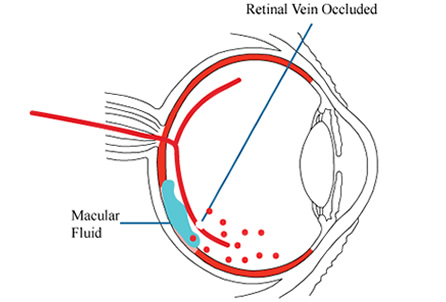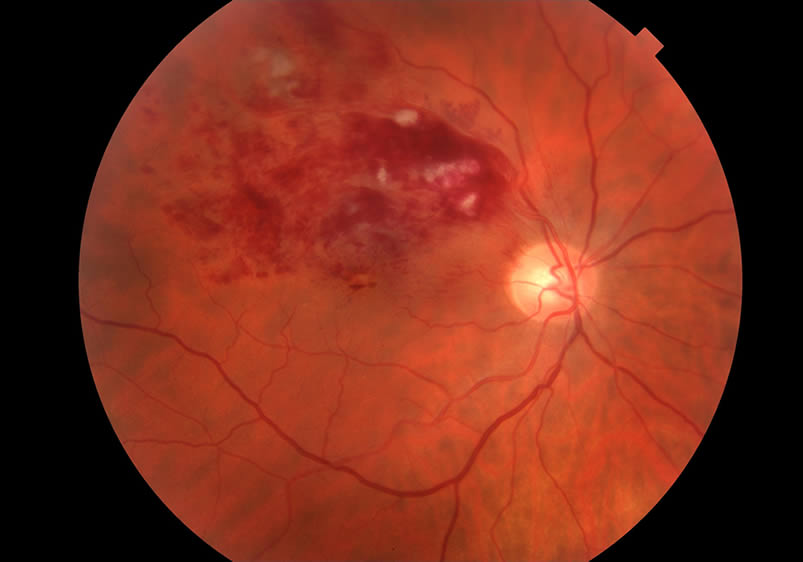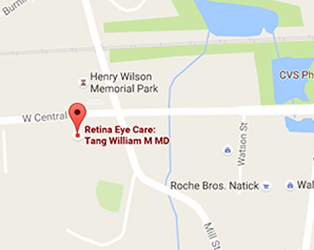Retinal Vein Occlusion
Overview
Retina Vein Occlusion is a common condition. It usually develops in patients with age > 50, but it can occur in younger patients. The retina is supplied by a tree of blood vessels–arteries and veins. One of the branches of the veins can become narrowed and occluded. Sometimes the main central trunk of the vein can become occluded. When that happens, fluid can accumulate in the macula, interfering with normal vision. Treatment usually is very effective and may include eye injections and laser treatments, but they often need to be repeated.
The retinal vein has become occluded, resulting in hemorrhages in the retina and fluid accumulation in the macula. Normal vision is interfered.
Risk Factors (Causes)
Age is a major risk factor for retinal vein occlusion. In the older age group, retinal vein occlusion is related to the patient overall cardiovascular health. The risk factors that should be minimized are:
- Cigarette Smoking
- Obesity
- Physical Inactivity
- High Blood Pressure
- Diabetes Mellitus
- Elevated cholesterol or triglycerides
In the younger age group, retinal vein occlusion may be related to an abnormal tendency for blood clots to develop. Laboratory testing may be needed to help identify this clotting tendency.
Outlook
Treatment usually consists of eye injections and/or laser treatments. Treatment is usually very effective in stopping the disease process. Treatments often needs to be repeated. With successful treatment, the vision can often be maintained at a stable level.




